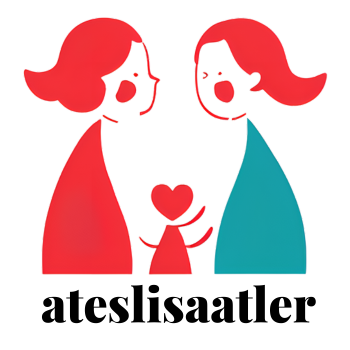
Communication is the backbone of any strong family bond. Yet, many of us struggle to express our thoughts and feelings openly. That’s where family therapy activities come in—they’re designed to foster understanding and connection among family members. I’ve found that engaging in structured activities not only helps to break down barriers but also encourages everyone to share their perspectives.
In this article, I’ll explore various family therapy activities that can enhance communication. Whether you’re looking to resolve conflicts or simply strengthen your relationships, these activities can provide the tools you need. Plus, I’ll offer a handy family therapy activities to improve communication pdf so you can easily access and implement these strategies at home. Let’s dive into the world of family therapy and discover how these engaging activities can transform your family’s communication dynamics.
Key Takeaways
Foundation of Communication: Effective communication is crucial for building strong family relationships and fostering emotional closeness.
Benefits of Family Therapy Activities: Engaging in structured activities helps improve communication skills, enhance emotional understanding, and provide tools for conflict resolution.
Variety of Activities: Activities such as role-playing, active listening exercises, and creative expression can significantly improve family dynamics.
Implementation Tips: Setting clear goals, creating a comfortable environment, and encouraging participation are key strategies for successfully integrating family therapy activities into your routine.
Adapting to Family Needs: Tailor activities to accommodate age differences, individual preferences, and diverse communication styles for maximum effectiveness.
Utilizing Resources: Leverage recommended books and online resources for additional strategies and exercises to enhance family communication.
Family Therapy Activities to Improve Communication PDF
Family therapy activities focus on enhancing communication within the family unit. These activities encourage open expression of thoughts and feelings while promoting understanding among members.
Key benefits include:
- Improved Communication Skills: Activities teach effective communication techniques, allowing family members to express themselves clearly.
- Enhanced Emotional Understanding: Engaging in these activities fosters empathy, helping family members grasp one another’s perspectives.
- Conflict Resolution: Activities provide tools for resolving disagreements calmly and constructively, reducing tension.
- Strengthening Relationships: Shared experiences through these activities reinforce bonds, promoting a supportive family environment.
Examples of family therapy activities include:
- Role-Playing: Members reenact scenarios to better understand different viewpoints.
- Active Listening Exercises: These require one person to speak while others listen without interruption, highlighting the importance of listening.
- Family Meetings: Structured meetings help discuss issues and share feelings in a safe space.
- Creative Expression: Art or writing activities allow family members to express feelings creatively, opening channels for discussion.
Implementing a mix of these activities regularly enhances communication dynamics and contributes to a healthier family environment. Revisit these activities as needed to maintain open lines of communication, adjusting them to fit the evolving family structure.
Importance of Communication in Families
Effective communication serves as the foundation for strong family relationships. It enables family members to express their thoughts, resolve conflicts, and foster emotional closeness.
Benefits of Improved Communication
- Enhanced Understanding: Improved communication increases empathy and perspective-taking among family members. Learning to express and understand emotions can deepen connections and strengthen bonds.
- Conflict Resolution: Families with open communication channels handle disagreements more effectively. Members can address issues directly and constructively, which reduces tension and fosters healthier resolutions.
- Emotional Support: Transparent communication encourages family members to share their feelings and concerns. This support system helps individuals feel valued and understood, contributing to overall emotional well-being.
- Stronger Relationships: Consistent communication practices build trust and intimacy in family relationships. Frequent dialogue promotes a sense of belonging and security, essential for a cohesive family unit.
- Misinterpretation: Words and tone can be easily misinterpreted, leading to misunderstandings. Clarity in expression mitigates confusion and fosters true comprehension.
- Defensiveness: Individuals may respond defensively to feedback or criticism, shutting down productive discussions. Addressing this barrier requires cultivating an open mindset to receive and share constructive feedback.
- Lack of Active Listening: Many family members focus on their responses rather than actively listening. Prioritizing genuine listening skills fosters a respectful and supportive environment.
- Emotional Distractions: Stress and anxiety can impede effective communication. Prioritizing a calm environment helps family members focus on dialogue rather than emotional turmoil.
Types of Family Therapy Activities
Family therapy activities vary, each designed to enhance communication and strengthen relationships. Below are several types that can significantly improve family dynamics.
Interactive Activities
Interactive activities actively engage family members in conversation and connection. Examples include:
- Role-Playing: Family members take on different roles in various scenarios, allowing them to express feelings and perspectives.
- Family Meetings: Regular, structured discussions provide a platform for everyone to voice concerns and ideas.
- Storytelling Circles: Each member shares personal stories, fostering understanding and empathy among family members.
These activities aim to create a safe space for dialogue and enhance mutual understanding.
Creative Activities
Creative activities encourage self-expression and emotional exploration. Examples include:
- Art Projects: Families create artwork together, which can lead to discussions about feelings and experiences.
- Music Sessions: Playing instruments or singing can promote bonding, while also facilitating emotional expression.
- Journaling Together: Family members write about their thoughts and feelings, then share insights, promoting deeper understanding.
These creative outlets help break down communication barriers and foster a sense of unity.
Therapeutic Games
Therapeutic games offer a playful approach to enhancing communication. Examples include:
- Board Games: Playing games that require teamwork encourages collaboration and improves communication skills.
- Feelings Charades: Family members act out emotions for others to guess, aiding in emotional recognition and expression.
- Trust Exercises: Activities that build trust, such as blindfolded obstacles, enhance communication and strengthen relationships.
Through these games, families build rapport and establish a more open dialogue.
Implementing Activities for Better Communication
Implementing family therapy activities can significantly enhance communication among family members. By following specific strategies, families can make the most of these activities and foster a deeper understanding.
Tips for Successful Implementation
- Set Clear Goals: Identify what each family member hopes to achieve. Whether it’s improving listening skills or expressing emotions more openly, setting goals guides the process.
- Create a Comfortable Environment: Establish a safe space where family members feel secure sharing thoughts and feelings. Ensure that distractions are minimized.
- Schedule Regular Sessions: Dedicate specific times for activities. Consistency helps reinforce communication habits and makes participation routine.
- Encourage Participation: Invite everyone to engage actively. Participation fosters a sense of belonging and encourages all voices to be heard.
- Practice Active Listening: Focus on listening without interruption. Show empathy and validate each other’s feelings to promote trust.
- Follow Up: After activities, discuss experiences and feelings. This reflection enhances understanding and highlights areas for improvement.
- Consider Age Differences: Tailor activities to suit varying age groups. Younger children may benefit from creative expression, while teens might engage better in discussion-based activities.
- Account for Individual Preferences: Recognize personal interests and skills. Choosing activities that cater to family members’ strengths enhances engagement and effectiveness.
- Assess Relationship Dynamics: Modify activities based on family relationships. Close-knit families might thrive on collaborative projects, while more distant relationships may benefit from structured discussions.
- Include Diverse Communication Styles: Adapt activities to accommodate different communication styles. Visual aids might help those who struggle with verbal expression, while written exercises can assist introspective family members.
- Be Open to Changes: Remain flexible in the approach. Adjusting activities based on family feedback ensures relevance and effectiveness over time.
Additional Resources
Explore various resources to enhance family communication through therapeutic activities effectively.
Recommended Readings
- “”The Family Guide to Emotional Intelligence”” – This book offers strategies to improve emotional connectivity and communication among family members.
- “”Nonviolent Communication: A Language of Life”” by Marshall B. Rosenberg – This text provides insights into expressing needs and feelings constructively.
- “”Creating Emotional Flow: Healing the Family Within”” – This book focuses on fostering emotional understanding and connection in family dynamics.
- “”The Five Love Languages”” by Gary Chapman – This reading explores how different expressions of love can enhance understanding and communication.
- “”Hold Me Tight: Seven Conversations for a Lifetime of Love”” by Dr. Sue Johnson – This book presents strategies for navigating communication obstacles in romantic partnerships within a family context.
- Psychology Tools – This site offers downloadable worksheets and guides focused on family communication strategies and exercises.
- Therapist Aid – Provides free resources, including worksheets and family therapy activities to improve communication pdf for enhancing communication skills within families.
- Parenting for Humans – This platform features articles and printable resources for improving family communication through various interactive activities.
- Printable Family Therapy Activities – A family therapy activities to improve communication pdf resource available online includes several activity sheets to guide family members through communication-building exercises.
- Mindfulness and Communication PDF – This document offers activities focused on mindfulness practices that promote effective listening and understanding among family members.
Patience and Commitment
Improving communication within a family is a journey that requires patience and commitment. By incorporating various family therapy activities I’ve discussed, I can create an environment where everyone feels heard and valued. These activities not only break down barriers but also foster deeper connections among family members.
As I explore these exercises and adapt them to my family’s unique dynamics, I’ll likely see positive changes in how we interact. Regularly revisiting these activities ensures they remain relevant and effective. With the right tools and a willingness to engage, I can pave the way for stronger relationships and a more harmonious home life.




